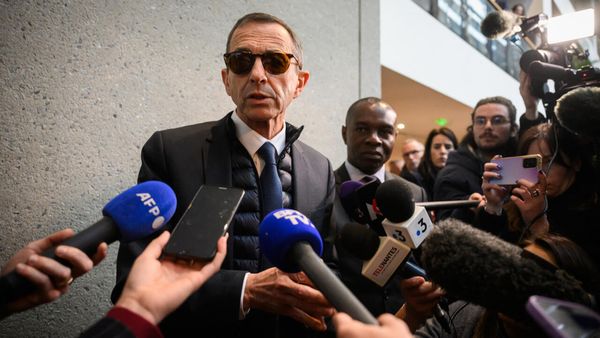
This year's steady slowdown in U.S. inflation likely continued in November, though the latest data may also point to steadily higher prices in some areas of the economy.
Tuesday's inflation report from the Labor Department is expected to show that businesses kept overall prices unchanged for a second straight month.
Falling gas prices, in particular, are thought to have offset a rise in food costs from October to November. And compared with a year earlier, inflation is expected to ease to 3.1% from 3.2% in October, according to a survey of economists by FactSet.
But a closely watched category called “core prices,” which excludes volatile food and energy costs, is predicted to rise 0.3% from October to November — a monthly pace that far outpaces the Federal Reserve's 2% annual inflation target. On a year-over-year basis, core prices are expected to increase 4%, the same as in October.
The Fed considers core prices to be a better guide to the likely path of inflation. Analysts say that increases in the costs of hotel rooms, airfares and possibly used cars might have accelerated core prices in November.
Gas prices, by contrast, have tumbled since September, having reached a national average of about $3.35 a gallon in mid-November, from a peak of $5 about a year and a half ago, according to AAA. The national average has since fallen further and hit $3.15 a gallon Monday.
Grocery store inflation has proved especially persistent and a drain on many households’ finances. Food prices remain about 25% higher than they were two years ago.
If core prices did rise 4% in November from a year earlier for a second straight month, it would provide support for the Fed's expected decision Wednesday to keep its benchmark interest rate unchanged for a third straight time. Chair Jerome Powell and other Fed officials have welcomed inflation's steady fall from 9.1% in June 2022 to 3.2% in October. But they have cautioned that the pace of price increases is still too high for the Fed to let down its guard.
As a result, even if the central bank is done raising rates, it's expected to keep its benchmark rate, which affects many consumer and business loans, at a peak for at least several more months.
Powell has even warned that the Fed might decide to raise rates again if it deems it necessary to defeat high inflation. The Fed raised its key short-term rate 11 times starting in March 2022, to 5.4%, the highest level in 22 years. Its goal has been to increase the costs of mortgages, auto loans, business borrowing and other credit to slow spending enough to further cool inflation.
Inflation has eased much faster this year than economists and Fed officials had expected. According to a separate inflation gauge that the Fed prefers, core prices rose 3.5% in October compared with 12 months earlier. That was less than the central bank's forecast of 3.7% for the final three months of this year.
Inflation's steady decline has sparked speculation about interest rate cuts next year, with some economists floating the potential for cuts as early as March. The Fed's preferred inflation gauge has increased at an annual pace of just 2.5% in the past six months.
But Powell has so far brushed aside the idea that the Fed might cut rates anytime soon. He is expected to say so again Wednesday.
“It would be premature," Powell said earlier this month, “to speculate” on the possibility of Fed rate cuts.







